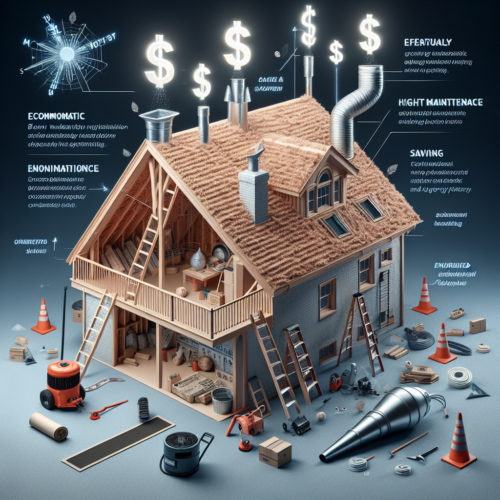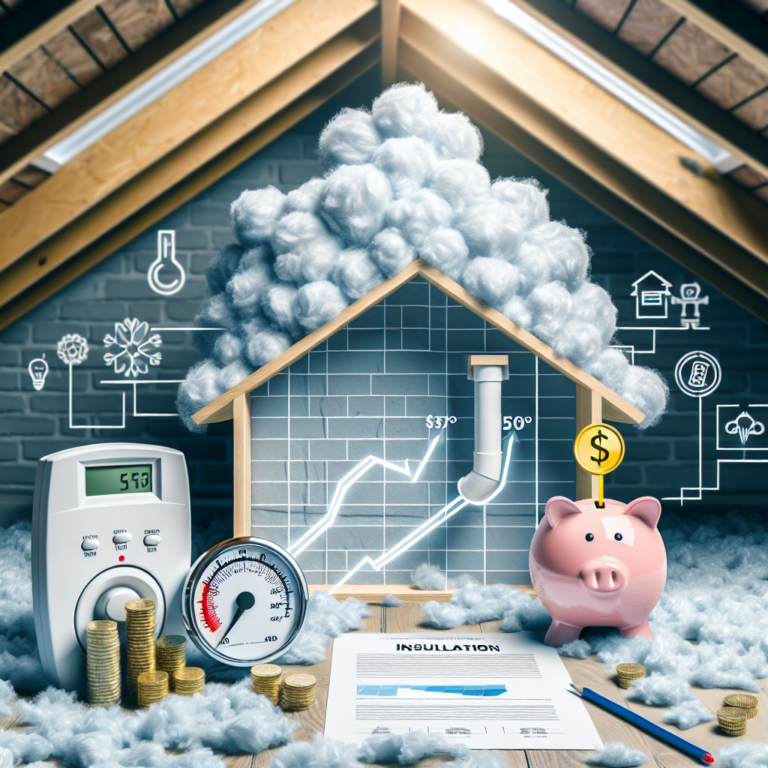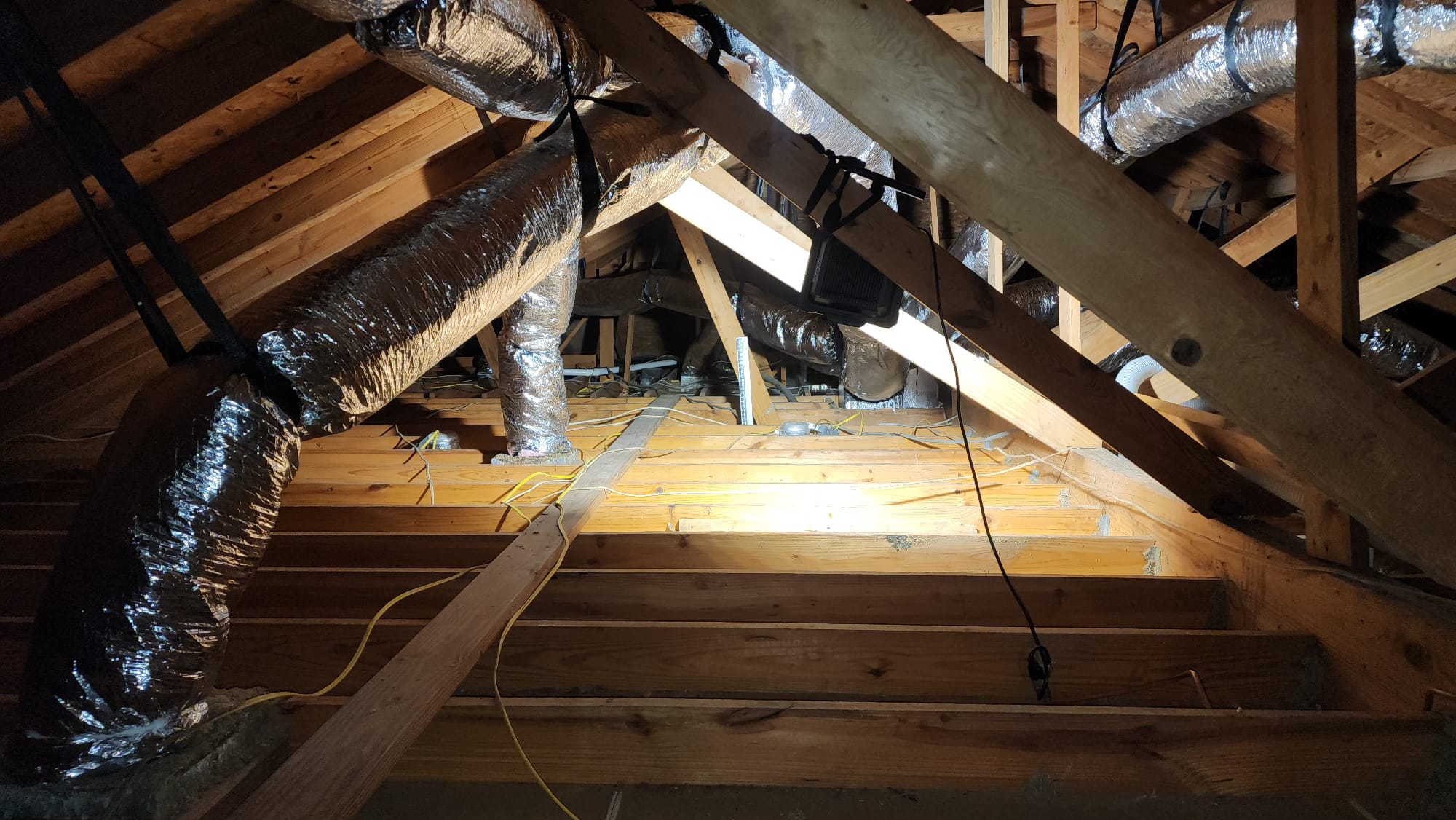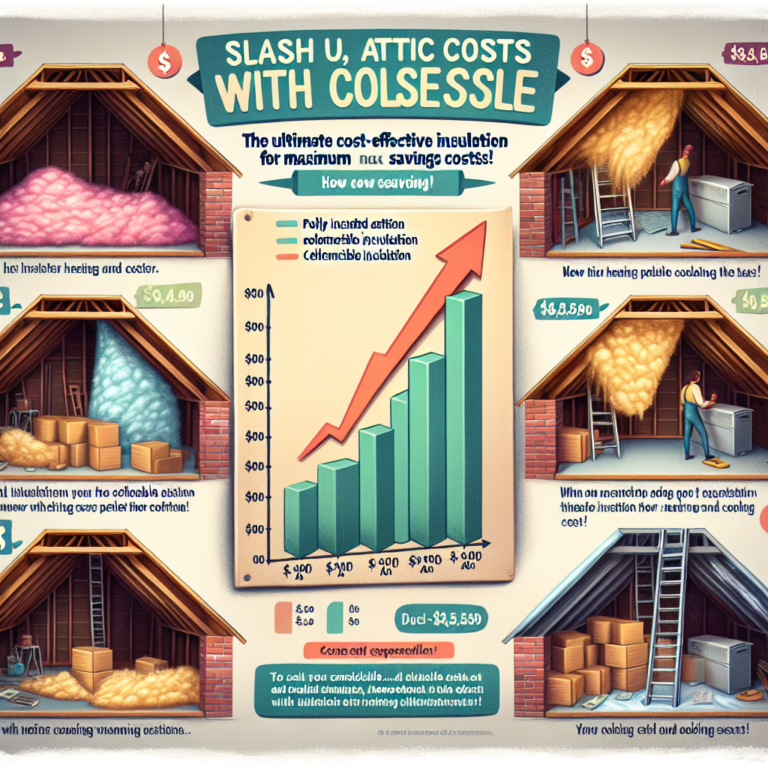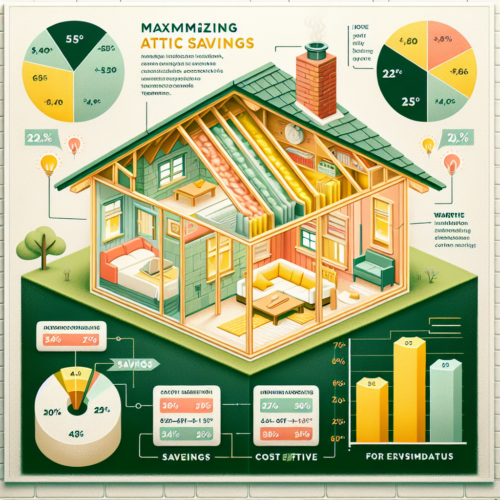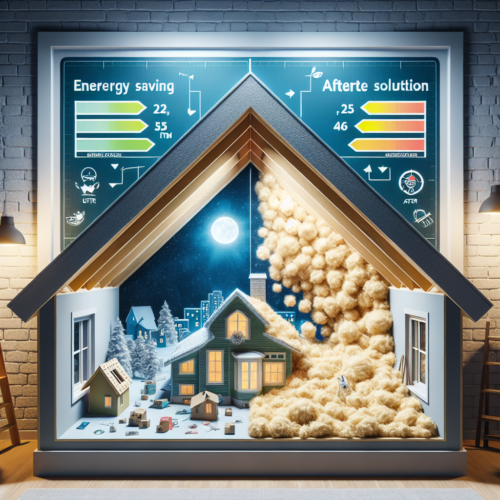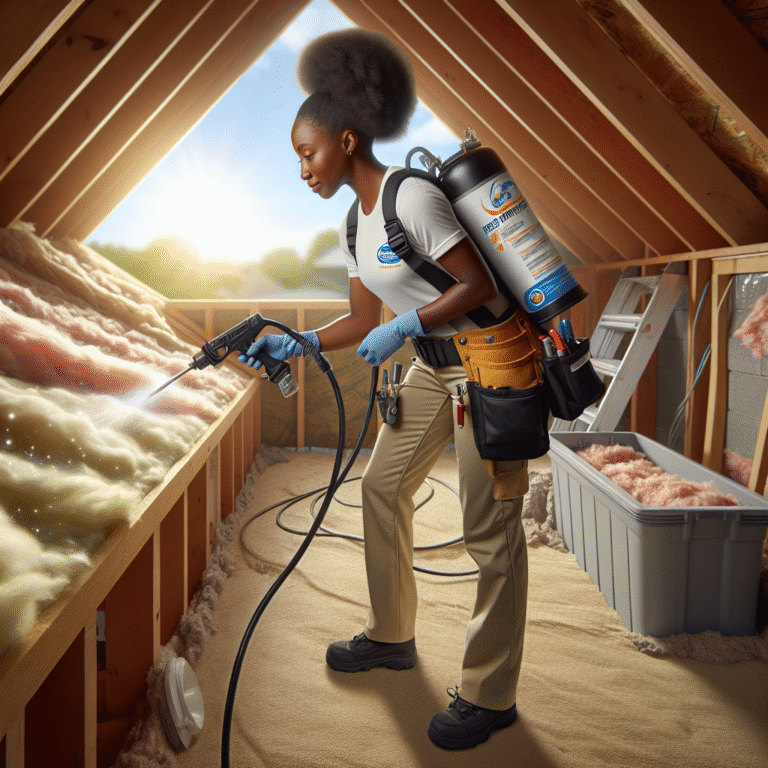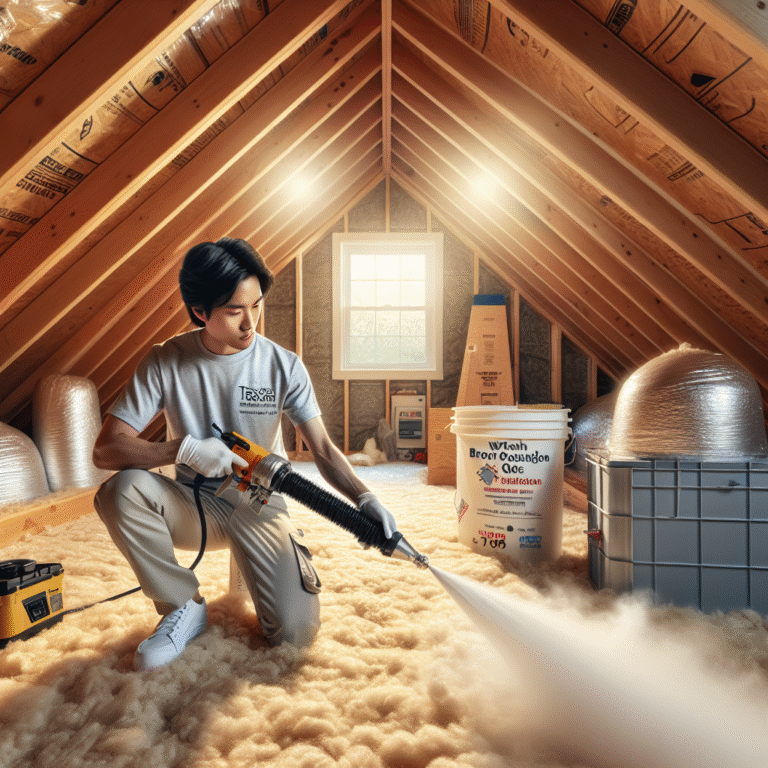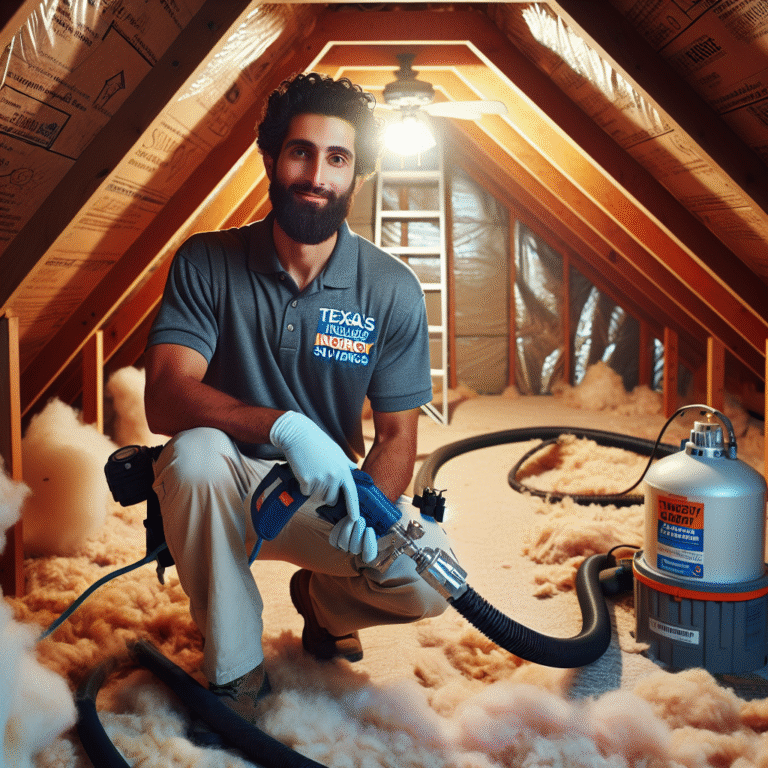-
Table of Contents
“Protect your home and your wallet with proper attic insulation and prevention of rodent damage.”
“Protect your home from costly repairs and energy loss with proper attic insulation and prevention of rodent damage. Learn more about the importance of attic insulation and how to prevent rodent infestations by visiting texasinsulationsolution.com. Don’t wait until it’s too late, take action now to ensure a safe and efficient home.”
Introduction
Attic insulation is an important aspect of home maintenance that is often overlooked. Not only does it help regulate the temperature in your home, but it also plays a crucial role in protecting your home from potential rodent damage. In this guide, we will discuss the importance of proper attic insulation and how it can prevent and mitigate rodent damage. We will also provide tips on how to identify and address any existing damage caused by rodents in your attic. By understanding the importance of attic insulation and rodent damage, you can ensure the safety and longevity of your home.
The Importance of Proper Attic Insulation: How It Can Save You Money
Attic insulation is an essential component of any home’s energy efficiency. It helps to regulate the temperature inside the house, keeping it warm in the winter and cool in the summer. However, many homeowners are unaware of the impact that rodent damage can have on their attic insulation. In this article, we will discuss the importance of proper attic insulation and how it can save you money in the long run.
First and foremost, let’s understand what attic insulation is and how it works. Attic insulation is a material that is installed in the attic to prevent heat transfer between the inside and outside of the house. It acts as a barrier, trapping the air inside and preventing it from escaping. This helps to maintain a consistent temperature inside the house, reducing the need for heating or cooling systems to work harder.
Now, let’s talk about rodent damage. Rodents, such as mice and rats, are known to make their way into attics through small openings or cracks. Once inside, they can cause significant damage to the insulation. They may chew on the insulation material, creating holes and gaps, or use it as nesting material. This can lead to a decrease in the effectiveness of the insulation, resulting in higher energy bills.
One of the main reasons why proper attic insulation is crucial is its impact on energy efficiency. When insulation is damaged, it cannot perform its intended function of trapping air and regulating temperature. As a result, the heating and cooling systems have to work harder to maintain a comfortable temperature inside the house. This leads to an increase in energy consumption and, consequently, higher utility bills.
Moreover, damaged insulation can also lead to air leaks. These leaks allow outside air to enter the house, making it harder for the heating or cooling systems to maintain a consistent temperature. This not only affects energy efficiency but also makes the house uncomfortable to live in. You may notice drafts or uneven temperatures in different areas of the house, making it challenging to keep the house warm or cool.
In addition to energy efficiency, proper attic insulation also plays a significant role in protecting your home from moisture damage. When insulation is damaged, it can no longer prevent moisture from entering the house. This can lead to mold growth, which not only damages the structure of the house but also poses a health risk to the occupants. Mold can cause respiratory issues, allergies, and other health problems.
Furthermore, damaged insulation can also attract pests and insects. As mentioned earlier, rodents can make their way into the attic through damaged insulation. But they are not the only ones. Insects, such as termites, can also enter the house through these openings. These pests can cause significant damage to the structure of the house, leading to costly repairs.
In conclusion, proper attic insulation is crucial for maintaining energy efficiency, protecting your home from moisture damage, and preventing pest infestations. It is essential to regularly inspect your attic for any signs of rodent damage and get it repaired immediately. Investing in high-quality insulation and ensuring it is properly installed can save you money in the long run by reducing energy bills and preventing costly repairs. So, make sure to give your attic insulation the attention it deserves to keep your home comfortable, safe, and energy-efficient.
Understanding the Dangers of Rodent Damage in Your Attic
Attics are often overlooked when it comes to home maintenance and repairs. However, neglecting this space can lead to serious consequences, especially when it comes to insulation and rodent damage. Many homeowners are unaware of the dangers that rodents can pose to their attic and the potential risks it can bring to their health and property. In this article, we will discuss the importance of understanding the dangers of rodent damage in your attic and how it can affect your home.
First and foremost, it is crucial to understand that rodents are not just pesky creatures that scurry around your home. They can cause significant damage to your attic, which can lead to costly repairs and even pose a threat to your health. Rodents, such as rats and mice, are known to gnaw on various materials, including insulation, wires, and wood. This behavior is not just a nuisance; it can also compromise the structural integrity of your attic and potentially cause a fire hazard.
One of the main concerns with rodent damage in the attic is the impact it can have on your insulation. Insulation plays a vital role in regulating the temperature in your home, keeping it warm in the winter and cool in the summer. When rodents chew on insulation, it can create gaps and holes, reducing its effectiveness. This can result in higher energy bills as your HVAC system works harder to maintain a comfortable temperature. Moreover, damaged insulation can also lead to moisture buildup, which can cause mold growth and further damage to your attic.
Aside from damaging insulation, rodents can also cause harm to your electrical wiring. As they gnaw on wires, they can expose the copper or aluminum, increasing the risk of an electrical fire. This is especially dangerous in the attic, where there may be flammable materials nearby, such as insulation or stored items. Additionally, rodents can also chew on electrical cords, which can cause power outages and damage to your appliances.
Furthermore, rodents can also bring in other pests and parasites into your attic. They can carry fleas, ticks, and mites, which can spread to other areas of your home and pose a threat to your family’s health. These pests can also cause damage to your attic’s structure and stored items, such as clothing and furniture. Moreover, rodents can also contaminate your attic with their droppings and urine, which can lead to unpleasant odors and potential health hazards.
It is essential to address rodent damage in your attic promptly to prevent further damage and potential health risks. If you suspect that you have rodents in your attic, it is best to contact a professional pest control service. They have the expertise and equipment to safely and effectively remove rodents from your attic and prevent them from coming back. They can also assess the extent of the damage and provide recommendations for repairs and insulation replacement.
In conclusion, understanding the dangers of rodent damage in your attic is crucial for the safety and well-being of your home and family. Rodents can cause significant damage to your insulation, electrical wiring, and bring in other pests and parasites. It is essential to address rodent infestations promptly and take preventive measures to avoid future problems. Regularly inspecting your attic and addressing any signs of rodent activity can help protect your home and ensure a comfortable living environment.
Cost-Effective Solutions for Attic Insulation and Rodent Damage Prevention
Attic insulation is an essential component of any home’s energy efficiency. It helps to regulate the temperature inside the house, keeping it warm in the winter and cool in the summer. However, many homeowners are unaware of the potential damage that rodents can cause to their attic insulation. Rodents, such as mice and rats, can not only destroy the insulation but also pose a health hazard to the residents of the house. In this article, we will discuss the importance of attic insulation and the cost-effective solutions for preventing rodent damage.
First and foremost, let’s understand why attic insulation is crucial for a home. As mentioned earlier, it helps to regulate the temperature inside the house. This means that during the winter, the insulation traps the heat inside, reducing the need for constant heating. Similarly, in the summer, it prevents the cool air from escaping, reducing the need for air conditioning. This results in significant energy savings and lower utility bills. Additionally, attic insulation also acts as a sound barrier, reducing noise from outside. It also helps to prevent moisture buildup, which can lead to mold and mildew growth.
Now, let’s talk about the potential damage that rodents can cause to attic insulation. Rodents are known to chew through insulation, creating holes and gaps. This not only reduces the effectiveness of the insulation but also creates entry points for other pests, such as insects and bats. Moreover, rodents also use insulation materials for nesting, further damaging it. This can lead to higher energy bills as the insulation is no longer able to perform its intended function. Additionally, rodent droppings and urine can contaminate the insulation, posing a health risk to the residents of the house.
So, what can homeowners do to prevent rodent damage to their attic insulation? The first step is to ensure that there are no entry points for rodents to enter the attic. This includes sealing any cracks or gaps in the walls, roof, and foundation. It is also essential to keep the attic clean and clutter-free, as rodents are attracted to food sources and nesting materials. Regularly inspecting the attic for signs of rodent activity, such as droppings and chewed insulation, can also help to catch the problem early on.
Another cost-effective solution for preventing rodent damage is to use insulation materials that are less attractive to rodents. Fiberglass insulation, for example, is not a preferred nesting material for rodents. However, it is essential to note that rodents can still chew through fiberglass insulation, so it is not a foolproof solution. Another option is to use cellulose insulation, which is made from recycled paper and treated with borate, a natural rodent repellent. This type of insulation is less likely to be damaged by rodents, making it a more durable option.
In addition to choosing the right insulation material, it is also crucial to install it correctly. Insulation should be installed in a way that leaves no gaps or spaces for rodents to enter. It is also essential to seal any openings around pipes, wires, and vents with steel wool or wire mesh, as rodents can easily chew through these materials. Regularly inspecting and maintaining the insulation can also help to prevent rodent damage in the long run.
In conclusion, attic insulation is a vital aspect of a home’s energy efficiency, and it is essential to protect it from rodent damage. Homeowners can take preventive measures, such as sealing entry points and using less attractive insulation materials, to avoid costly repairs and health hazards. Regular maintenance and inspections can also help to catch any rodent activity early on and prevent further damage. By taking these cost-effective solutions into consideration, homeowners can ensure that their attic insulation remains intact and performs its intended function for years to come.
Q&A
1. What is attic insulation?
Attic insulation is a material that is used to reduce heat loss or gain in a building by providing a barrier between the interior and exterior of the attic. It helps to keep the temperature inside the attic consistent and can also improve energy efficiency.
2. How does attic insulation help with rodent damage?
Attic insulation can help prevent rodent damage by creating a barrier between the rodents and the interior of the attic. It can also make it more difficult for rodents to enter the attic, as they may be deterred by the insulation material.
3. What are some signs of rodent damage in attic insulation?
Some signs of rodent damage in attic insulation include chewed or torn insulation, droppings or urine stains, and gnaw marks on wires or other materials in the attic. You may also notice a musty or foul odor coming from the attic, which could indicate the presence of rodents.
Conclusion
In conclusion, it is important for homeowners to be aware of the potential damage that rodents can cause to attic insulation. Not only can this lead to costly repairs, but it can also compromise the energy efficiency and comfort of the home. Regular inspections and proper maintenance can help prevent and address any issues with rodent damage in the attic. It is also recommended to consult a professional for proper removal and replacement of damaged insulation. By staying informed and taking necessary precautions, homeowners can protect their attic insulation and maintain a safe and comfortable living environment.


